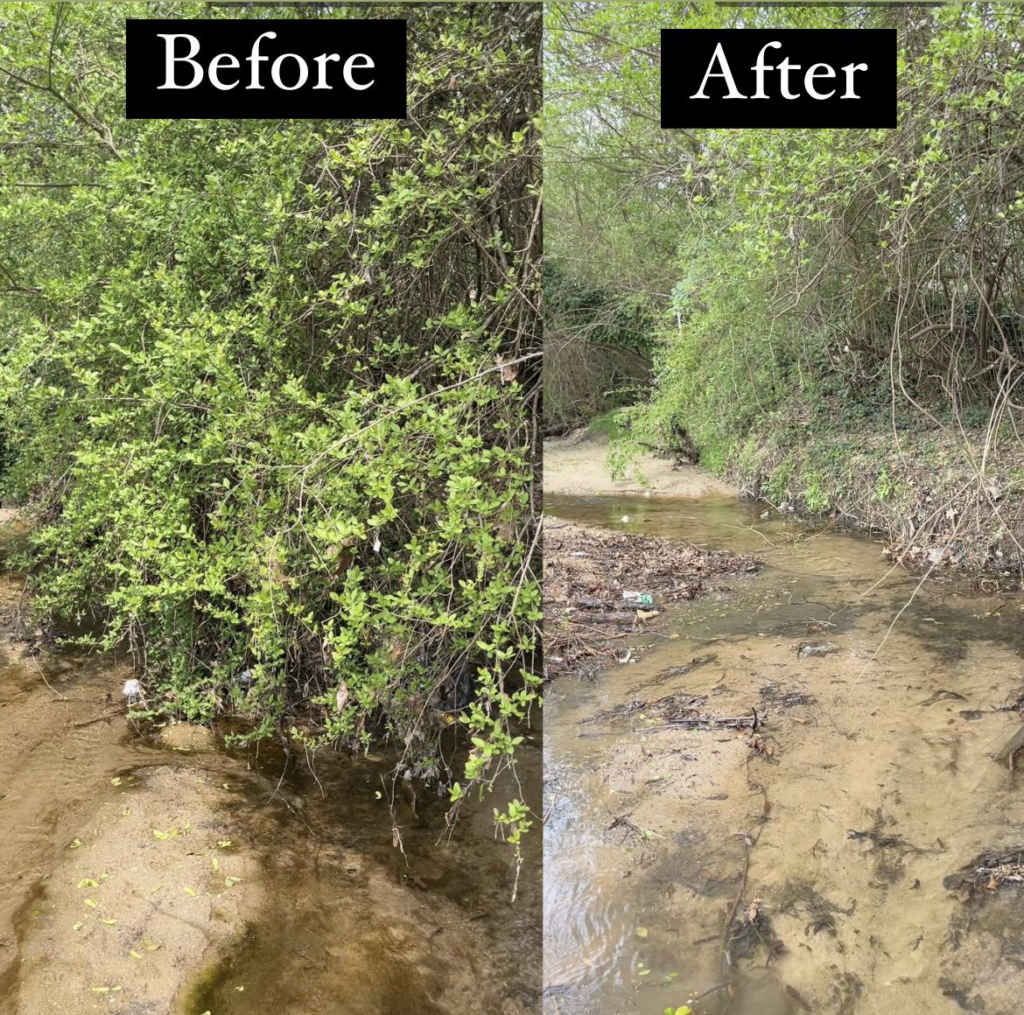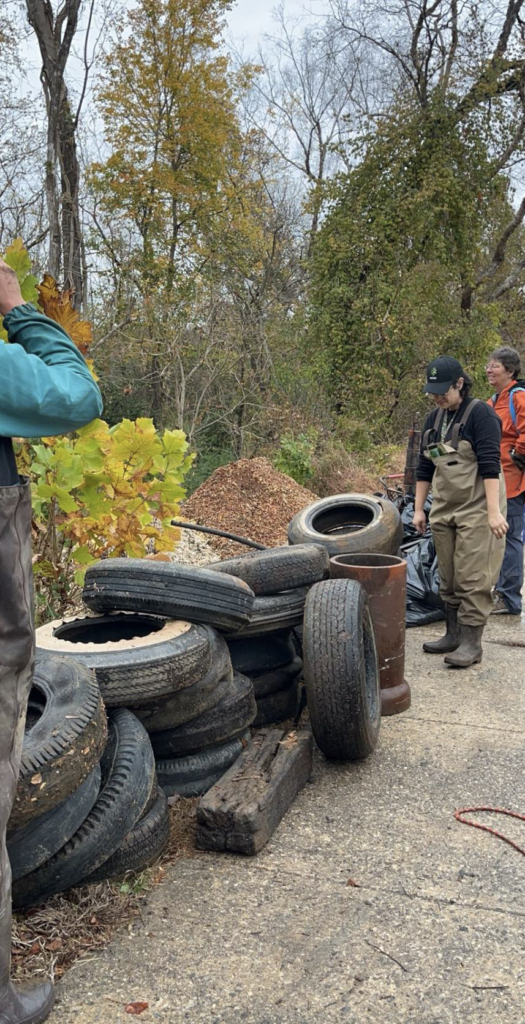Isabella Bevans: Embracing the Muck – Learning About Wetland Conservation Through Experience

As long as I can remember I have dreamed of being a scientist. It wasn’t until 8th grade when I learned about water quality and my passion for environmental science really was sparked. I was so intrigued by the level of biodiversity and interconnectedness that waterways held. Growing up a mountain kid, I never knew that the Piedmont region of North Carolina had wetlands, much less within city limits. Now, as a sophomore at NC State, declaring my focal area has been troublesome because I have so many interests within Environmental Science and picking one topic seemed impossible. But when I saw a position open up for work study at Walnut Creek Wetland Park I remembered my long-term passion for waterways and jumped at this opportunity.
Since starting work at Walnut Creek Wetland Center in October 2023, I have learned even more about this type of environment than I ever could have imagined. Wetlands are vital and serve as “nature’s kidneys”. They are considered a filtration system for pollutants and a buffer from flooding to surrounding areas where certain species thrive most. These ecosystems thrive best when they have biodiversity to mitigate from natural disasters and environmental changes that leave the world with dirty air/water and other health related problems. My responsibilities at the park were challenging and problem-solving focused, but very rewarding. I was primarily tasked with removal of invasive species, which can be grueling when abiding by environmental protection formalities. Some of the main invasive species that I targeted, included but were not limited to; Chinese privet, Japanese stiltgrass, and various briars/vines.


Coming into this job with a solid understanding of sustainability and conservation efforts was definitely a vital trait that helped me spearhead mitigation efforts efficiently and effectively along the way. Although removal of invasive species is a significant restoration effort, I also had the opportunity to engage in hands-on mitigation projects beyond that. The main area of focus in the park I had spearheaded was restoration of the creek bank on what is called the “South-Side Trail”. Specifically this trail was created to connect the Wetland Park with the historical Rochester Heights Neighborhood, but it faces several environmental problems. This area constantly floods (backwash of storm water) and has an eroding creek bank which is held together by invasive species (primarily privet). Currently, to try and mitigate these problems Celia Lechtman, the assistant manager at the pak, has taken on this project and decided to try and implement dense forest planting on a test patch which is a long term solution that will take several years to complete. To start this project we first cleared a patch along the river bank about 40 ft x 25 ft. Then we mulched this area in order to overturn the health of the soil. Lastly, we have planted chickasaw plum trees to have some sort of ground cover holding the river bank together before the dense planting begins in the coming year. Our efforts along the South-Side trail have become some of the most rewarding work I have done during my internship, combining ecological restoration while creating community green spaces simultaneously.

Another side to environmental restoration that I have learned is that you have to observe before you can take action, in order to accomplish your goals effectively. We pioneered a wildlife monitoring procedure by hanging a trail camera to observe what wildlife actually lives in Walnut Creek. This enhanced our conservation efforts because it was a minimally destructive technique to monitor what species are inhabiting our ecosystem so we can determine the creek’s health. When the footage was compiled we were ecstatic! There were families of otters, racoons, birds, beavers and others. The fact that there were several offspring present in the footage was a great sign of biodiversity and Walnut Creek is healthier than maybe we think.

Although removal of invasive species and observing natural habitats are important, one of the greatest concerns to Walnut Creek Wetland Park is litter and waste. Before it was established as a park this natural area was used as a dumping ground because no one could develop the land due to the natural wetness of the swamp. Additionally the waterways connect to storm water drains which flood trash right into the habitat whenever it rains. Resulting from this constant problem, I have helped lead river trash clean-ups to improve the natural aesthetic to community members who enjoy the park, but also mitigate detrimental effects of pollution of the wetland habitat. This was one of my favorite continuous tasks at the park because seeing an immediate difference in the landscape after removing waste was insane.

As I transition to new opportunities outside of this internship, I often reflect on my efforts at the park and its significant impact on me as I grow personally and professionally. This internship has sparked my interest in sustainability and environmental restoration through community engagement which I am planning on exploring these topics more as I continue my degree here at NC State. Beyond that, I want to learn more about field botany and naturalism to be able to conserve native species as I have in this internship. Therefore I will try to work towards my field botany certificate through my degree. I have come to realize I enjoy conquering the elements of working at a job that allows me to be outside. So when looking for my next opportunity I know what type of environment I will thrive in. Oftentimes Walnut Creek Wetland park has augmented my understanding of the urgency of preserving these natural habitats as well as resources. Through hands-on restoration, community engagement, and scientific research, we can continue to keep these types of habitats thriving by providing them sustainable support through our actions. My passion for sustainability is what drives me to continue my studies and get my degree in Environmental Sciences.
I hope that everyone who visits the park can grasp how important our natural areas are and develop a deep admiration and appreciation for how amazing these ecosystems truly are. From this internship I will continue to be a lifelong advocate for wetlands and environmental conservation in general to ensure that these ecological wonders continue to enhance our planet for future generations.